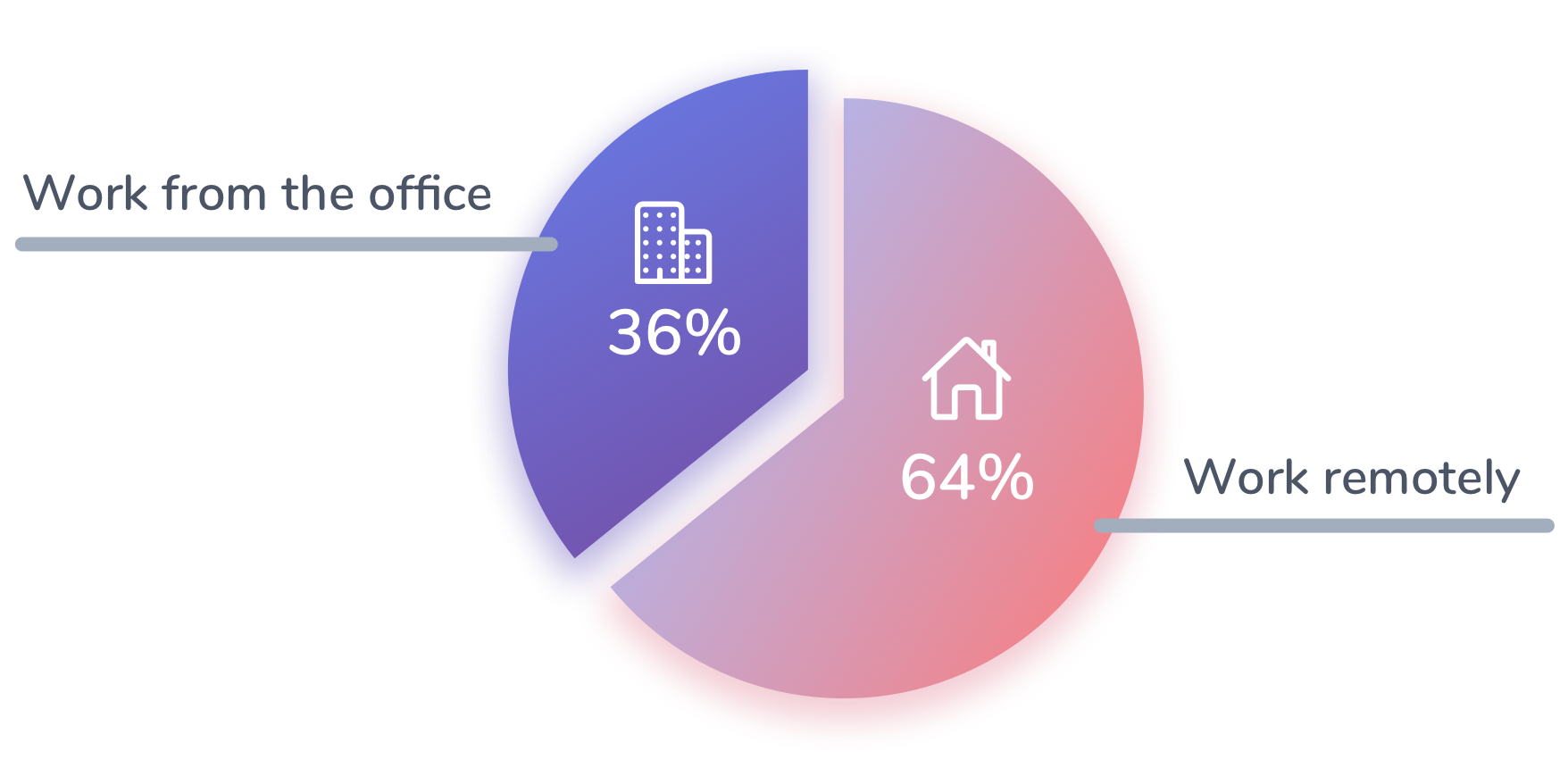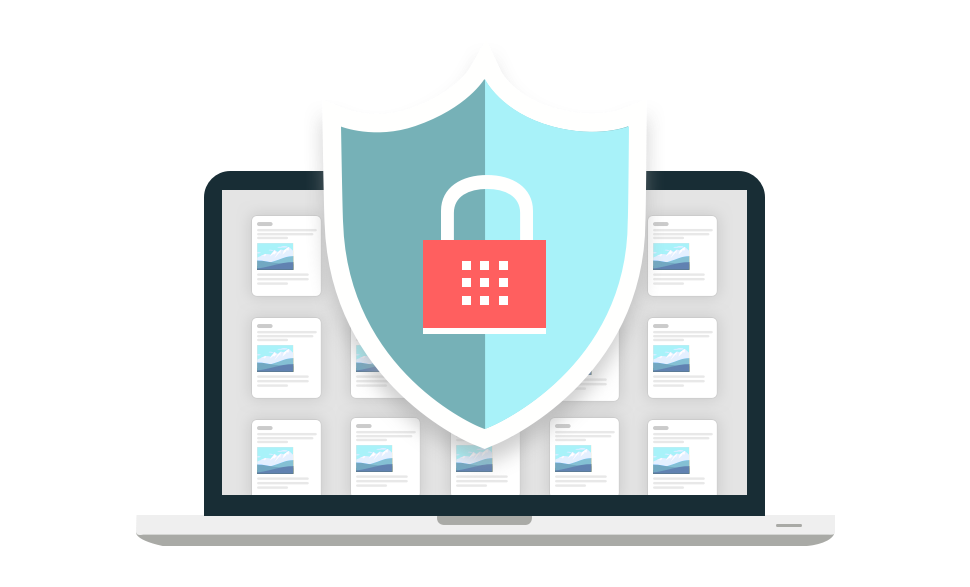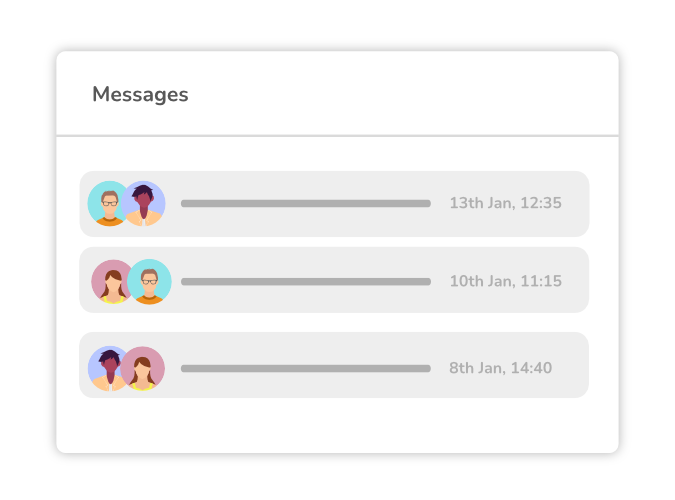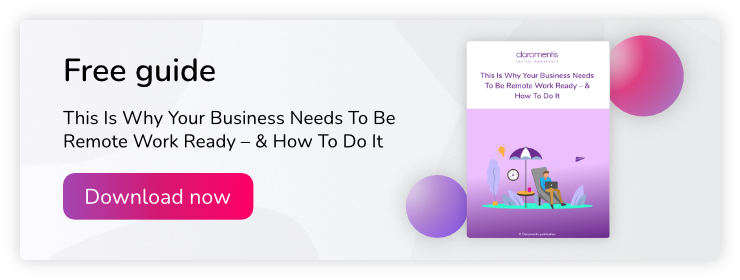Our Remote Work in the UK Report – which surveyed over 1,000 UK workers during the third national lockdown of the Covid-19 pandemic – revealed that 73% of people want a hybrid working arrangement.
Conversely, just 7% of workers want to return to the office, whilst 20% want to continue to work from home full-time post-pandemic.
Before we dig into what a hybrid working model will mean for the future of work, let’s get to grips with what a hybrid workplace actually is.
What is hybrid working?
In short, hybrid working is a mixture of remote work and traditional office-based work. Staff have the autonomy to work from home, a café, or a co-working space for some or most of the week, returning to the office only when face-to-face interactions are required.
Hybrid working is seen as providing the best of both worlds. Team members can benefit from the flexibility of home working, where they can better fit work around appointments and leisure time, save on commuting time and costs, and work more productively thanks to fewer distractions. The days that are spent within a physical office space are reserved for social interaction and in-person collaboration, or even just the occasional team-building day.
How can businesses support a hybrid working model?
Our survey showed that the ideal split between time spent home working and office working is 64% and 36% respectively. Whilst it’s clear that workers want to spend the majority of their time working remotely, it’s important for organisations to recognise that people still have a desire to attend a physical workplace. So don’t let the office lease expire just yet.

Getting your hybrid model of working right for both your office-bound and remote workers is essential to the employee experience. Focus too much on office-based activities, and you risk isolating your remote employees. Too remote-centric, and your office workers will feel left out.
The key to effective hybrid teams is balance. Here are 3 tips on how to get it right:
Make it easy to collaborate
Cross-team collaboration can be challenging even in a traditional office setting, with different working styles, skills, and knowledge being brought to the table which, depending on the situation, could result in either innovation or conflict. Add in the complexity of distributed teams, and you could run into trouble.
Thankfully, effective remote team software like project management tools makes it easier for your teams to collaborate from afar by centralising tasks, providing visibility on who’s working on what, and showing project progress.
Teams can communicate via in-built project discussion areas to refine work and requirements, and use tags to @mention individuals with specific questions. Task management features enable your project managers to assign work to team members, who can then flag it as “complete” when the work is done.

Centralise company information
Trouble locating the right information is an age-old problem, and it’s one that affects office-based and remote workers alike.
A white paper by IDC, Coveo, and Lexalytics found that almost a quarter of employees’ time was spent finding, consolidating, and analysing information. And 44% of the time, staff couldn’t find the information they needed.
Teams will continue to struggle finding the information they need if businesses don’t invest in the technology that makes it easier. Centralised document management systems, which provide staff with a single space for locating up-to-date files, is the order of the day.

These online document libraries can be accessed by all staff, regardless of their location, giving them one place in which to store, organise, find, and download company files. Time-savings aside, document management systems provide complete visibility of your organisation’s information, ensuring that no worker – whether office-based or remote – is left behind.
Be transparent and asynchronous in your communications
Any good company culture includes open and honest communications at the heart of its strategy, and this is especially so for a hybrid workplace.
Indeed, your organisation must actively avoid situations where office workers and remote staff become siloed due to lack of effective communications. This can easily happen if important company announcements or decisions are reserved solely for in-person meetings, leaving your remote employees in the dark.
Over time, this can create tensions, a sense of inequality, and an “us vs them” mentality, where remote workers start to feel second best. These divisions will ultimately reduce collaboration and foster negative team dynamics.
That’s why transparent communications are essential for effective hybrid working. For instance, have all distributed team meetings via video call, so that remote workers are not excluded from important discussions. If staff cannot attend company presentations – regardless of their working location – record it and share the video on your company intranet afterwards, so that people can catch up.

Providing a variety of communication tools will help strengthen the bonds between your hybrid teams too. Asynchronous communication apps are useful for distributed teams who may work different hours or are in different timezones, because their very nature means that a response isn’t required straight away.
Synchronous communication tools, on the other hand, are best for getting instant answers. They also give teams a space for general chit-chat, which is just as important for promoting good working relationships.

![[FREE GUIDE] This Is Why Your Business Needs To Be Remote Work Ready – & How To Do It](https://no-cache.hubspot.com/cta/default/5025095/2fe668ae-fee5-486f-8c8a-79a6da716731.png)




